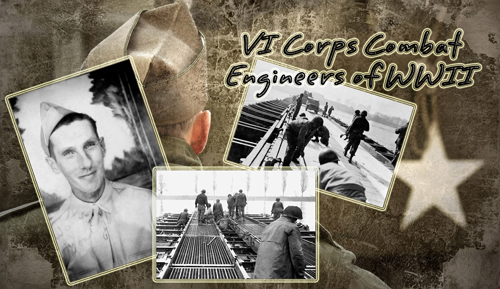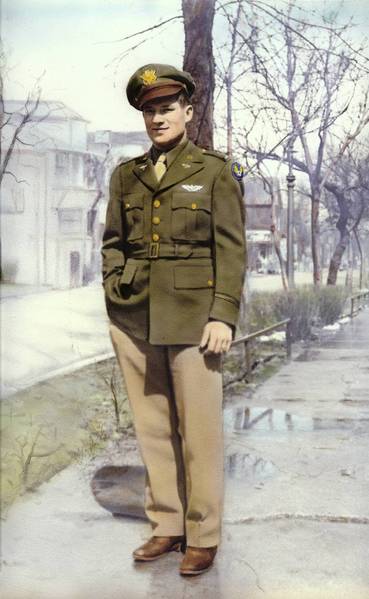chicagotribune.com
World War II hero's long-overdue funeral touches lives on 2 continents
For nearly 70 years, there was just a name on a wall — and an empty grave
John Kass
July 4, 2012
The young woman from the Netherlands didn't know much about Lt. Emil Wasilewski of Chicago.
But Joyce Staniszewski, 26, who works at a bank in the Dutch town of Kerkrade, wondered about him often. She'd think about him when she'd bring flowers every month and set them near the war memorial at the Netherlands American Cemetery and Memorial in Margraten.
She had adopted him, as part of a program at the cemetery, but in truth his was just a name on the wall, like so many other names on monuments, cold letters carved in stone for war dead everywhere, giving no hint about the life they stood for. And still, she wondered about the man behind the name.
"I tried to find pictures of Emil to see how he looked like," she said in an email. "I still wonder what kind of a person he was and if it always was his dream to join the military and what would his life look like if he would have survived World War II."
What Joyce Staniszewski knew about Lt. Emil Wasilewski was the most important thing:
She knew that he was an American.
And today is our Independence Day, a day of families and friends and connections as we think about this nation of Americans and how it started, and how best to keep it.
Joyce Staniszewski has a special place in her young heart for Americans. But she didn't know enough about Emil Wasilewski.
She didn't know that he was from the South Side of Chicago. Or that he was handsome and clear-eyed, so optimistic in his uniform before he was sent overseas. She didn't know that he was a bombardier on a B-17G, or that he died when his Flying Fortress crashed in Germany.
And she didn't know that his father buried an empty coffin at St. Casimir Cemetery because Emil's body could not be found, the father mourning an empty grave for years until his own death.
"In 2010 I heard you could adopt graves of WWII soldiers at the Netherlands American cemetery in Margraten," Staniszewski wrote. "And because I wanted to do something for all those men and women, I thought this is a start. A lot of Dutch friends wonder why I want to do that. Well, it's because my dad's side of the family is from Poland, and they fled the Nazis in Poland and made it to Holland. But if the Americans wouldn't have liberated Kerkrade, they wouldn't have survived WWII and I wouldn't be here today. So I'm really thankful for that."
Around Memorial Day, she heard about my column on Lt. Emil Wasilewski. And she read that nearly 70 years after he was killed in action, something amazing happened. His nephew had given a DNA swab to a special U.S. Army group that searches for the remains of lost soldiers, and she read that he'd been found in Germany, buried in a grave near the crash site.
And she learned he was to be brought back stateside, to be buried on June 26, with full military honors, at Arlington National Cemetery, the magnificent resting place for America's war dead.
"At first I couldn't believe it and then I cried," she wrote. "I couldn't wish for better news on Memorial Day and that his family now finally can say goodbye and Emil gets the funeral he deserves."
There will be another long-overdue funeral at Arlington next month. The funeral of Sgt. John E. Hogan, of Missouri, whose remains also had been lost for some seven decades. Hogan has relatives in the Chicago area. One is Sandy Skurnicki, 60, of Palos Hills, who read my column on Wasilewski.
The Army had recently linked Skurnicki to the remains of Hogan, her third cousin, through a swab of her DNA. And she also knew, through Army documents, that Wasilewski was among his crew mates. She contacted Wasilewski's relatives.
"I thought, oh my God, this is the same guy who was a crew member with John Hogan," she told us.
Then Melissa Mahoney, 49, of the Ravenswood neighborhood on Chicago's North Side, contacted us via email. Mahoney is the direct niece of John Hogan. She and Skurnicki did not know one another.
Mahoney said Sgt. Hogan's death — and missing body — was especially difficult on her grandmother, father and uncle.
"I think when you don't have the ability to say goodbye in some sort of way, it's really hard," Mahoney said. "It's like you're walking around with an open wound."
Just like Wasilewski's family, like so many other American families in so many other wars, Hogan's parents did not have a body to bury. The Army sent the family a letter, now yellow with age, saying "the Department of the Army has been forced to conclude that the remains of your loved one are not recoverable."
A few months ago, Melissa Mahoney got a call from a cousin. Sgt. Hogan's remains had been found. After the column on Wasilewski ran on Memorial Day, she began checking and cross-checking available documents.
She checked the date of the crash, Sept. 13, 1944, and where the aircraft went down, near Neustadt, Germany, after a bombing run to take out German oil refineries. Everything matched. Mahoney figured Sgt. Hogan and Lt. Wasilewski had spent their last minutes together.
"This is the wildest thing in the world," Mahoney said. "The whole thing is unbelievable. It's unbelievable that they found him in the first place."
Sgt. Hogan's remains are scheduled to be buried at Arlington on Aug. 24. Mahoney and other family members say they'll be there when he's lowered into the ground.
Wasilewski's relatives were at Arlington last week. None had ever known the young man whom they'd come to honor as he was laid to rest, finally, on American soil. But each knew the story of the grandfather, and empty grave at St. Casimir, and how the old man would stand graveside, mourning his boy.
It was sunny with a breeze at Wasilewski's burial. His casket was draped in an American flag. In the coffin were his remains and a full uniform. The casket was taken to the grave by a horse-drawn caisson. An honor guard fired a 21-gun salute. A bugler played taps.
"He got what he earned and deserved," said Wasilewski's nephew Wally Wade, of Lake Forest. Of his late grandfather, Wasilewski's father, Wally said, "He'd be smiling down."
"It's an honor to be there with him," said Wade's brother Don, a financial planner from Downers Grove. "He died for our country. And he's reuniting our family."
Joyce Staniszewski sent flowers from the Netherlands. Back in Palos Hills, Sandy Skurnicki said a prayer.
Connections happen all around us. Sometimes we avoid them or we don't notice. But sometimes we're lucky to perceive them, and we become aware.
"It's amazing," Don Wade said, "how all the ripples are expanding."
Twitter @John_Kass
Copyright © 2012, Chicago Tribune
Lt. Emil Wasilewski, of Chicago, was a bombardier on a B-17G who died when his Flying Fortress crashed in Germany during World War II. (Family photo / May 25, 2012)
Proud Daughter of Walter (Monday) Poniedzialek
540th Engineer Combat Regiment, 2833rd Bn, H&S Co, 4th Platoon
There's "No Bridge Too Far"





